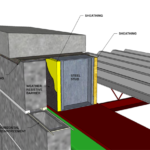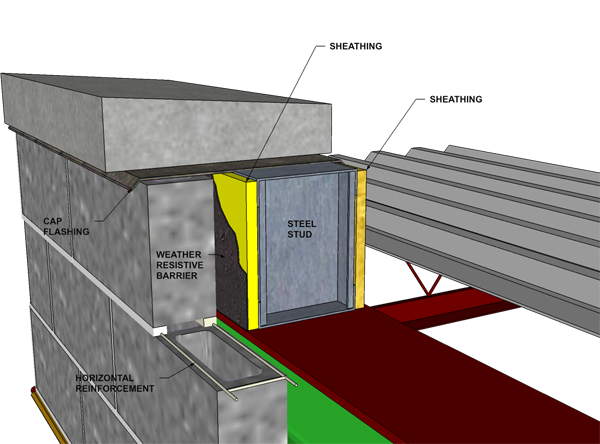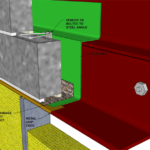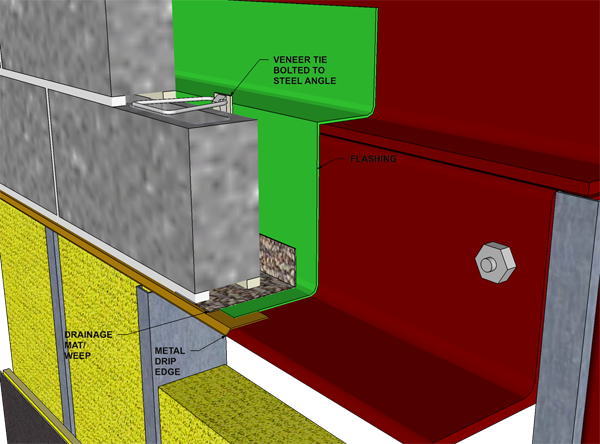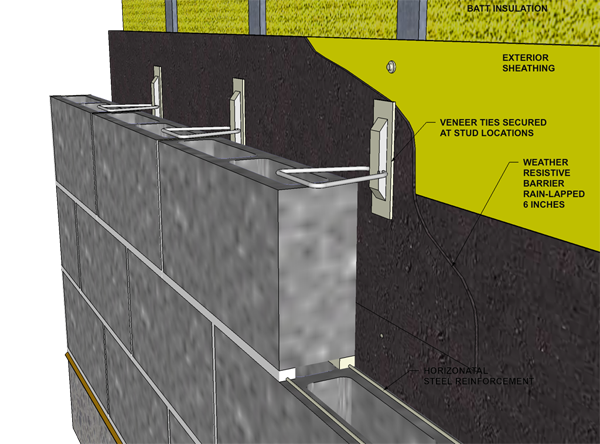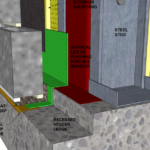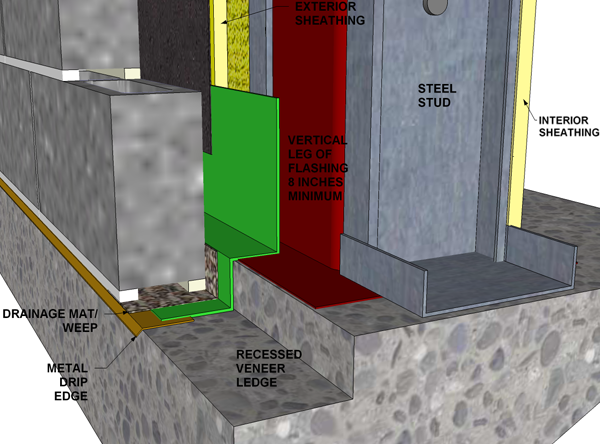Concrete Block Veneer / Steel Stud
This versatile wall system features a durable, low-maintenance masonry façade with a steel structure.
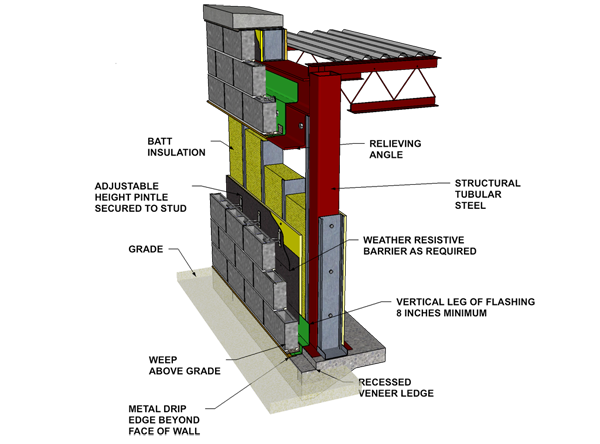
Recommended Building Types
- Multi-family residential, hotels and office buildings, shopping centers and restaurants
- Use where budgets are more important than longevity
- Choosing the Right Masonry System for your Budget
Benefits
- Looks like a solid masonry building but a steel stud backup system usually costs less
- Many of the benefits of a masonry façade: durability, low maintenance, high fire rating, and numerous design choices
- drainage cavity keeps building interiors dry
Special Considerations
- Steel studs flex more than the masonry veneer – this can lead to cracks developing in the masonry unless the studs are designed to strict deflection tolerances
- Concrete block veneer shrinks as it ages. It needs control joints at 24′-0″ o.c. max
- Volatility of steel prices makes it difficult to predict final project costs
- Multiple trades involved, which makes jobsite coordination more difficult
- Tolerances for steel erection are looser than those for masonry – which can lead to conflicts during veneer construction
- Steel studs can corrode if water penetrates past the drainage cavity or due to condensation
- Interior surfaces (drywall) are prone to vandalism and damage in heavy traffic areas
- There is a potential for mold growth on sheathing unless mold-resistant sheathing is used
Definition and Assumptions
Backup: 16 gauge x 6″ deep Steel studs @ 16″ on center. Fiber batt insulation between studs.
Sheathing: 5/8″ exterior grade gypsum board, screwed into studs. Weather resistive barrier over sheathing.
Veneer: 4″ concrete block (CMU) veneer, plain gray smooth face
Cavity: 2 inch air space
Flashing: Base Flashing and weeps
Veneer ties: Adjustable Veneer ties screwed into studs
Spacing: 16″ vertical x 16″ horizontal
Veneer reinforcement: 9-gauge ladder joint reinforcement at 16″ o.c.
Shelf angle: At floor lines, for veneer heights greater than 30 feet
Mortar: Type N, Portland cement/lime, plain gray
Joints: Concave tooled
Regional Variations
- When masonry veneer is used in areas of high seismic risk, Veneer ties are required to attach to wire reinforcement embedded in Mortar bed joints in the veneer. Check your local requirements – and save money by using normal Veneer ties in areas of low seismic risk.
- Many areas of the western U.S. have good local sources for lightweight aggregate, and the use of lightweight concrete block (CMU) is the norm. In other parts of the country, medium weight and normal weight block are more common.
- Understand that some form of horizontal reinforcement is required in all concrete masonry construction, including veneer applications.
Fire Rating (hours)
Sound Transmission Class (dB)
Wall Weight (lb/sq. ft.)
30 lb/sq. ft.
Energy Rating
R-value: 22.9 with 6” fiber batt insulation
Calculation:
| Outside Air | =0.17 |
| 4 inch CMU | =1.19 |
| Air Gap | =0.97 |
| Gyp board | =0.45 |
| 6 inch batt insulation | =19.00 |
| Interior Air | =0.68 |
| Total | =22.91 |
Sustainability & LEED
- Energy efficiency, thermal comfort and energy analysis – up to 10 pts
- Innovation and design – 1 pt
- Recycled content – 2 pts
- Regional material (where applicable) 2 pts
- Renewable energy and thermal mass – up to 10 pts
- Concrete Masonry and the LEED Program
- Determining the Recycled Content of Concrete Masonry Products
Design Tips
- Use insulation that is installed in the cavity whenever possible: it is nearly continuous and is much more effective than insulation installed between the studs. Studs provide a direct thermal path through the wall and reduce insulating efficiency. Studs are denser than the insulation and the cold travels through the studs and ignores the insulation. This phenomenon can reduce the insulating capacity of a wood stud wall by 40% and by 60% when Steel studs are used.
- New requirements in energy codes may require that you use rigid insulation in the veneer drainage cavity when the structural backup is built of wood stud or steel stud. If your construction project is subject to the International Energy Conservation Code (IECC) or the requirements of ASHRAE-2004 or ASHRAE-2007, you might be required to also install a continuous layer of insulation to this wall. IECC requirements vary by climate, so make sure you understand local conditions and what energy code is relevant in your area.
- Use galvanized hardware(including screws) for masonry Veneer ties to minimize corrosion potential.
- Design the steel stud backup to a deflection limit of L/720 to minimize veneer cracking.
- Tighten up the tolerances for steel construction to match those for the masonry veneer. Some of the difference can be taken up in the drainage cavity but there can also be significant conflicts between the steel erection and masonry trades.
- Design relieving angles at each floor line for multi-story buildings to permit the brick veneer to expand independently of the backup.
- shelf angles may not be required for veneer support at every floor line. Cut down on the number of shelf angles to save money and simplify your construction. If your veneer is shorter than 30 feet above the top of the foundation wall, you may not need relieving angles at all.
- Attach windows and doors to the structural Steel studs, not the masonry veneer.
- Make sure you have at least ¾” overlap of the door and window jambs onto the brick veneer. Install backer rod and sealant around all openings.
- You must use sheathing to face the steel stud wall at the drainage cavity.
- Use building paper to cover the sheathing, or use a water resistant sheathing with taped joints.
Construction Tips
- Meet with the general contractor early in the project to make sure the steel erector understands masonry construction tolerances
- Anchor Veneer ties into the steel stud using galvanized screws. Anchorage into sheathing alone is not permitted
